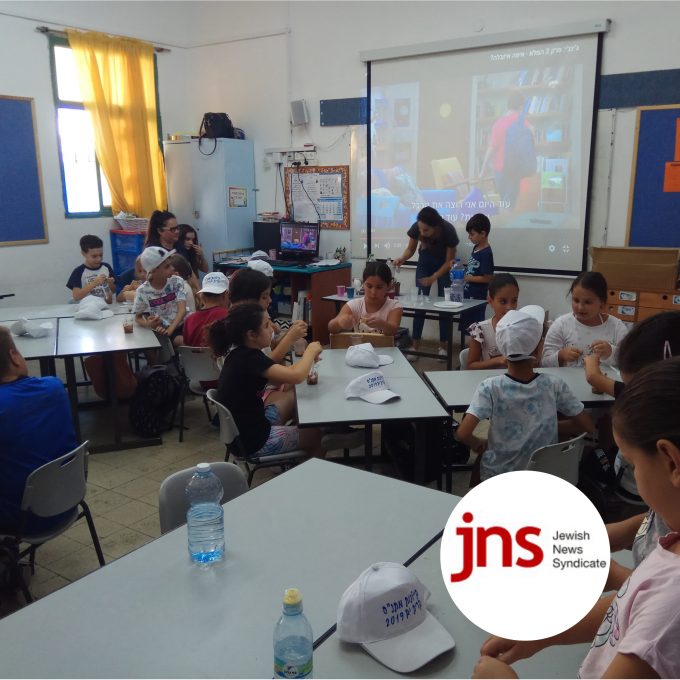The entry for Leo Strauss at World ORT’s Music and the Holocaust website states that little is known about his life before he was arrested and sent to the Theresienstadt “camp-ghetto”. But that may be about to change thanks to the discovery of some memoires written by his wife’s niece, Dorrit Dunn.
The papers, together with postcards sent to Dorrit by her Aunt Myra from Theresienstadt and a photograph of the talented librettist and musician himself, were discovered at the back of a cupboard by her son, David, and daughter-in-law Joy soon after her death in 1998.
“We didn’t understand the significance of it at the time,”? said Joy. “We went to a concert of music from Theresienstadt in 2010 and there was a reference to Leo in the programme and we began to realise that he and his wife, Myra, had played a significant role in the cultural life of the camp. So we decided not to sit on it; we Googled music and Holocaust and came up with World ORT’s website.”?
A little of the material has already been uploaded to the website’s page on Leo Strauss while the rest waits to be translated and assessed.
“We didn’t know them and it wasn’t something that was talked about in the family but we feel that we’ve done a little bit for Leo and Myra to show that they haven’t been forgotten and that feels important,”? Joy said. “I can’t begin to imagine what it would have been like for them but there’s this thought that you’re going to disappear and no-one will know what’s happened to you “モ and that impels you to do something.”?
Leo and Myra were deported to Auschwitz in October 1944 at the same time as Rafael Schächter , the Romanian-born musician whose defiant performances of Verdi’s Requiem at Theresienstadt were commemorated this week at a major concert in Prague, just one hour away from the site of the camp-ghetto.
Schachter was one of the first personalities to be profiled on the Music and the Holocaust website when it was launched in 2007. The website filled a gap in the way the Holocaust was understood and remains the most comprehensive examination of the topic with 100 recordings and 343 articles so far.
And it has proved to be a popular destination for people who want to know more about one of the greatest crimes in history.
“We get tens of thousands of visits each month and those figures have been increasing year on year which gives us the impetus to do more research and prepare more material,”? said World ORT Website Developer Sadler Johnson, who manages the site. “And we expect those figures to increase further with new content we’ve been adding recently.”?
Until recently, the website has featured mainly Czech, Slovak, Polish and German musicians and composers, most of whom are not well known to general audiences. That has changed with exciting new research on the role of music in the French resistance , including material on famous figures such as Edith Piaf , Yves Montand and Maurice Chevalier .
Researching and writing France-related features has been a satisfying experience for Daisy Fancourt, who is studying for her Masters in Musicology at King’s College, London.
“There’s been a whole host of songs and compositions which have come to light which had been forgotten because they were written in a bad time when other things took priority,”? Ms Fancourt said.
And there are some amazing accounts of how music was used for subversion , on the one hand, and to mould and control public opinion on the other.
The French composer Francois Poulenc , for example, lived under occupation but was permitted to continue to produce and perform his music by the Germans. Unbeknown to them, however, he was an ardent supporter of the resistance and helped many Jews to escape.
“He wrote pieces which were sent to London where they were printed and then dropped over France by RAF bombers. The music contained coded messages for the resistance. They were mainly to give hope to the people of France: because there was no unified resistance this was a clever way to give some kind of cohesion to what was going on, to let people know that there were others involved in the same kind of activities,”? Ms Fancourt said.
Ms Fancourt was encouraged to contribute to the website by Clive Marks OBE who, as administrator of the Lord Ashdown Charitable Trust, was a major visionary and financial force in its creation. The website has also enjoyed the support of the Conference on Jewish Material Claims Against Germany and the Samuel Sebba and Maurice Marks Charitable Trusts.
“I was already doing independent research in this area but I was happy to contribute because the website is such a great platform and has such a high viewer rating,”? she said. “The Holocaust is such a big topic and it’s on so many school curricula and people don’t realise how big a way music was involved, so they’re surprised by the content.”?
Having completed a lot of work on France and Spain , she is now working on England.
“As far as I’m aware Music and the Holocaust is the most comprehensive website on the topic in the world. If we want it to be truly comprehensive then it has to cover every country that was involved,”? she said.





